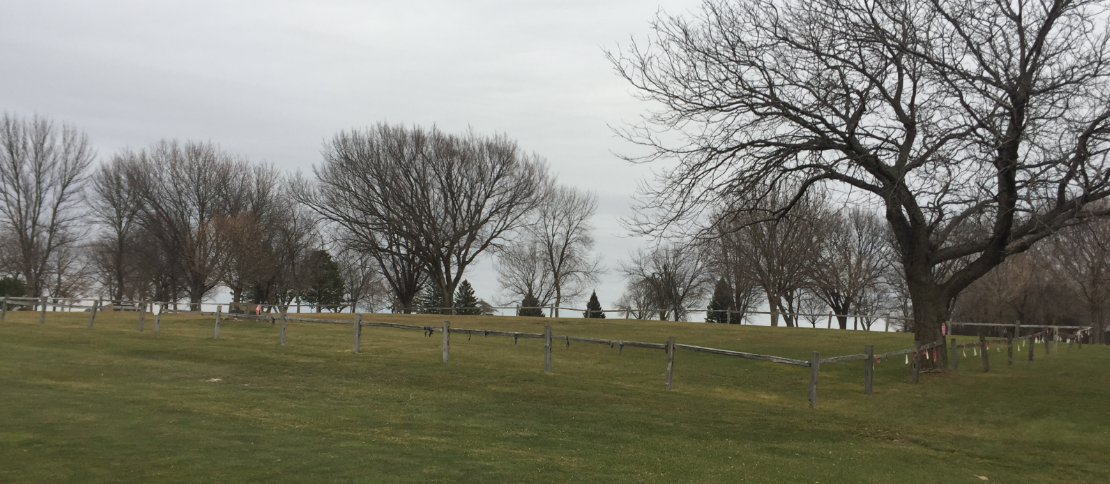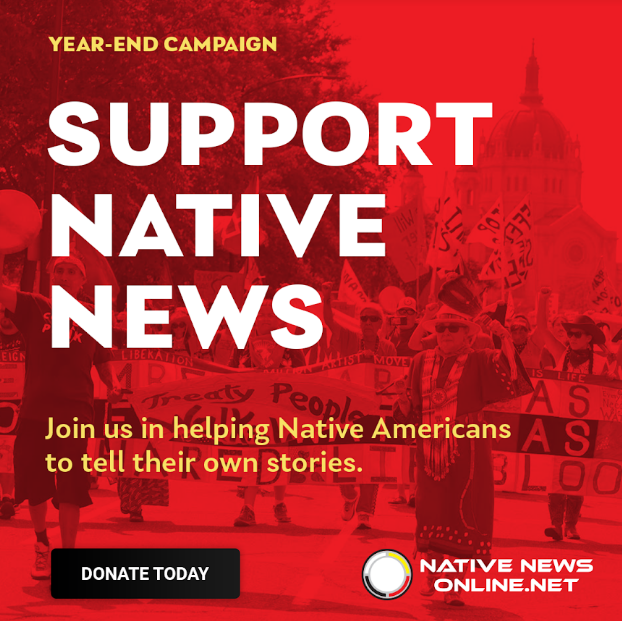
- Details
- By Levi Rickert
Opinion. Tucked between the fourth and the fifth holes on the fairway of the Hiawatha Golf Course in Canton, South Dakota, lies a fenced-in Indian cemetery. There are no markers for the 126 known graves found there. The course’s golfers would probably never suspect why the area is fenced off unless they entered it and read a placard facing opposite the fairway listing the names of – not all but some – of 121 Native people buried there. The known names.
Those perusing the golf course’s website aren’t told of the Indian cemetery found there. “The low-key course boasts a 9-hole layout,” the website reads. “The beautiful scenery and casual environment makes it easy to enjoy yourself while showing off your best swing.”
Want more Native News? Get the free daily newsletter today.
The story behind the unmarked graves is far from easy, or beautiful or casual.
Lying in the cemetery are the remains of Native people who died in Canton while housed at the Hiawatha Indian Insane Asylum, also known as the Canton Native Asylum. Sanctioned by Congress and established by the Bureau of Indian Affairs (BIA), the asylum operated for 31 years and housed some 400 American Indian inmates from more than 53 various tribes from across the United States.
While labeled an insane asylum, the vast majority of those sent to Hiawatha did not suffer from mental illness, but rather had difficulty adjusting from their tribal culture to American life. Indian agents called them troublemakers, still practicing their traditional ceremonies, or labeled them uncooperative towards authorities. The typical inmate did not speak English. Therefore, the staff could not properly communicate with them.
Quick math: 126 Native people died there, that is 1 in 4 of those housed there. According to records, more than half died of curable diseases.
During its 31 years of operation, there were 27 investigations into ill treatment, abuse and poor living conditions.
Funding for the facility came through Congressional appropriations to the Bureau of Indian Affairs. The graves are unmarked because the BIA did not want to pay for grave markers, according to the USGenWeb Project. Today, the unmarked graveyard is maintained by the city and the Keepers of the Canton Native Asylum Story, a group that focuses on education, reconciliation, and restoration related to the asylum.
The Hiawatha Indian Insane Asylum operated during the same period as Indian Boarding Schools, after the Indian wars, and during the era of assimilation. Some of the Indian boarding school employees also worked at Hiawatha. Some of the cruel treatment Native American children experienced in Indian boarding schools also occurred at Hiawatha, according to Indianz.com.
Native News Online’s reporter Jenna Kunze became acquainted with an effort by the Rosebud Sioux Tribe, located in South Dakota, to repatriate the remains of at least six Indigenous people found at the Hiawatha cemetery, as the result of a relationship with the Rosebud Tribal Historic Preservation Office.
Native News Online on Thursday published Kunze’s article, ‘A Place of Padlocks and Chamber Pots’: Repatriation Discussions for the 126 Natives Buried at the Only Government-Run Native Insane Asylum.
Rosebud Tribal Historic Preservation Officer Ione Quigley told Kunze:
“With the big push toward repatriating all the ancestral remains from the boarding schools and from this particular institution, I'm thinking that it's going to go back to the Bureau of Indian Affairs to pay for it. Knowing that the Bureau of Indian Affairs did have a hand in it in the beginning.”
The Department of the Interior had not responded to Native News Online’s request for comment on whether they would pay for the repatriations.
The BIA, once an institution established to carry out the dirty work of the colonial powers over Native people, needs to decide what it wants to be.
Does it want to be a body that continues to marginalize and oppress Native people or have we reached a point in history where the BIA looks after the rights, welfare, and mental health of Native people. Does it want to be a body that not only stops exploitation but attempts to rectify its wrongs.
During all its conflicts, the US has taken the time, care and money to bring home American soldiers who died overseas. Whether Vietnam, Korea or World War II, repatriating, bringing our people home, has been a hallmark of American values.
Another hallmark of American values has been to overlook doing so for the marginalized, the poor and people of color.
It’s time to call out the hypocrisy of these institutions and bring light to these two Americas.
Repatriating and paying for the repatriation of those lost during these domestic conflicts – in boarding schools and at the Hiawatha Indian Insane Asylum – will not erase or make right the terror experienced by Native populations.
It is a small token, a step towards recognizing the pain forced upon generations of Native people.
BIA: Do the right thing and bring our people home.
More Stories Like This
Superhuman. Should We Be Better Than We Are?Senator Ben Nighthorse Campbell Proved Representation Matters
The Lie We Keep Telling About Wounded Knee
Another Weapon of Mass Destruction
Colorado cannot heal until it confronts Sand Creek honestly
Help us defend tribal sovereignty.
At Native News Online, our mission is rooted in telling the stories that strengthen sovereignty and uplift Indigenous voices — not just at year’s end, but every single day.
Because of your generosity last year, we were able to keep our reporters on the ground in tribal communities, at national gatherings and in the halls of Congress — covering the issues that matter most to Indian Country: sovereignty, culture, education, health and economic opportunity.
That support sustained us through a tough year in 2025. Now, as we look to the year ahead, we need your help right now to ensure warrior journalism remains strong — reporting that defends tribal sovereignty, amplifies Native truth, and holds power accountable.
 The stakes couldn't be higher. Your support keeps Native voices heard, Native stories told and Native sovereignty defended.
The stakes couldn't be higher. Your support keeps Native voices heard, Native stories told and Native sovereignty defended.
Stand with Warrior Journalism today.
Levi Rickert (Potawatomi), Editor & Publisher

